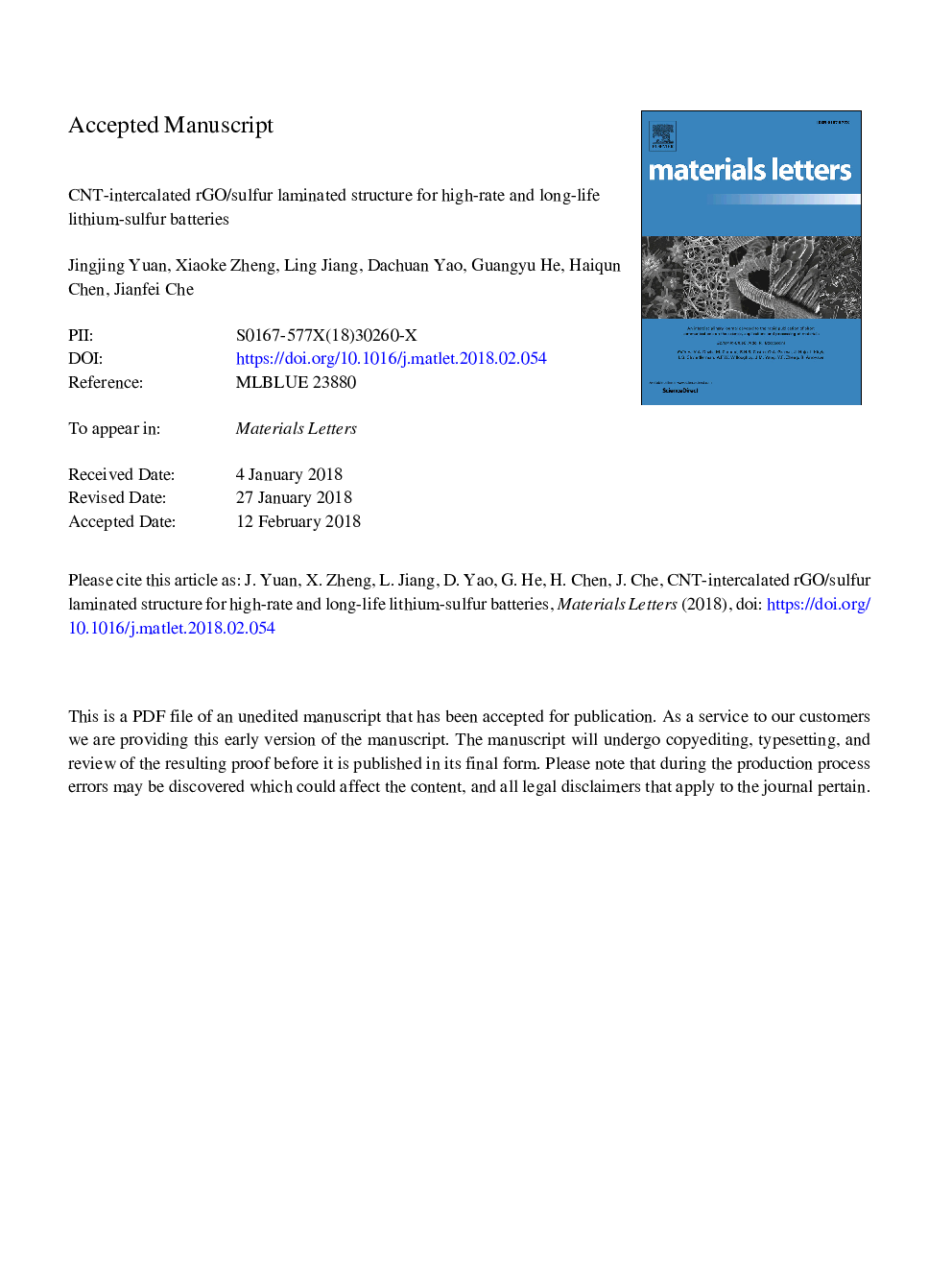| Article ID | Journal | Published Year | Pages | File Type |
|---|---|---|---|---|
| 8013688 | Materials Letters | 2018 | 10 Pages |
Abstract
Lithium-sulfur (Li-S) batteries represent one of the next-generation Li-ion batteries. However, the poor conductivity and large volumetric expansion of sulfur result in low rate performance and unfavorable cycle stability. Herein, a laminated structure of sulfur/reduced graphene oxide intercalated by carbon nanotube (CNT-rGO/S) composites was designed and fabricated for the first time to address the issue. The composites prepared via hydrothermal coprecipitation was endowed a perfect crystal and highly integrated structure, which retained a good electrical conductivity and accommodated the sulfur volume expansion due to the sufficient free space between the CNT-intercalated graphene layers. The CNT-rGO/S cathode exhibits a good capacity of 783.3â¯mAhâ¯gâ1 at 0.5â¯C and a desirable cycling stability with 77.2% of the capacity remaining after 1000 cycles even at a rate as high as 5â¯C, which offers great potential for practical applications in Li-S batteries.
Related Topics
Physical Sciences and Engineering
Materials Science
Nanotechnology
Authors
Jingjing Yuan, Xiaoke Zheng, Ling Jiang, Dachuan Yao, Guangyu He, Haiqun Chen, Jianfei Che,
